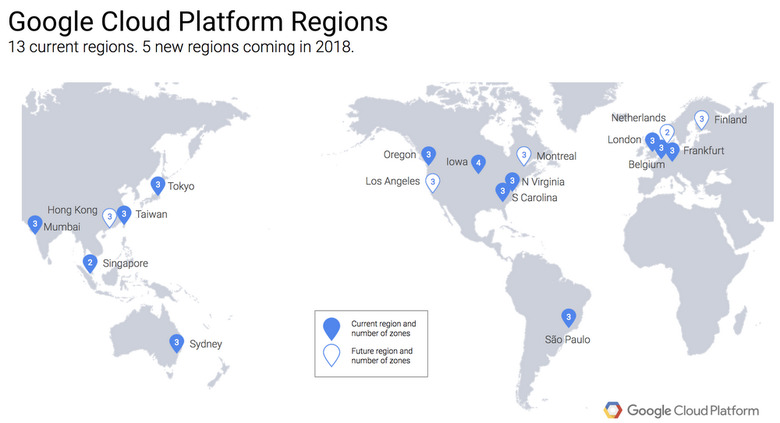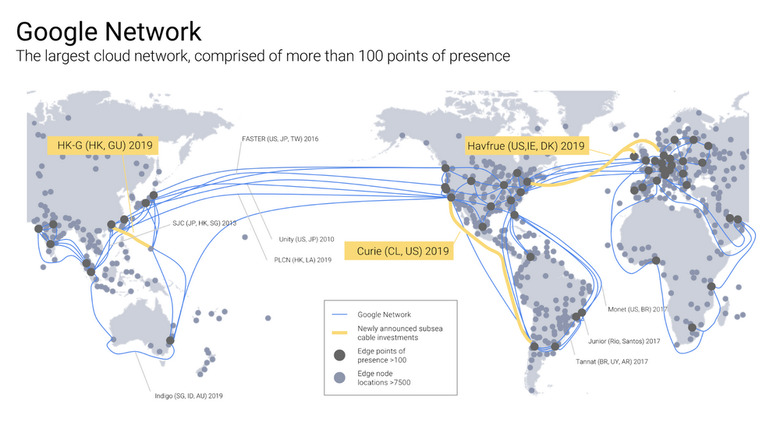Google Cloud gets a big boost with new data centers and undersea cables
It's a pretty big day for Google, as the company has announced a major expansion to the infrastructure that drives its Cloud network. This expansion encompasses much of the globe, with three new submarine cables and data centers in five new regions planned. These new regions will come online beginning later this year, while the undersea cables will all launch in 2019.
The five new regions Google is adding to its infrastructure begin with the Netherlands and Montreal, which will open in the first quarter of 2018. As explained on the Keyword, those will be followed by new openings in Los Angeles, Finland, and Hong Kong. We don't know when exactly Google plans to launch in those last three regions, but it says that it'll have more on tap once the roll out to all five is complete.

While those new data centers and regions are necessary to keep Google's Cloud network up and running, arguably the more exciting announcement today concerns those undersea cables. The first of these cables is named Curie, which is a private cable that will connect Chile to Los Angeles. Google says that this will be the first subsea cable connected to Chile in 20 years, and since it's a private cable, it will be used to serve Google customers in Latin America.
With the Havfrue cable, we see Google shake things up a bit. Havfrue, which will connect the US to Denmark and Ireland, will actually be the product of a partnership between Google, Facebook, Aqua Comms, and Bulk Infrastructure. While each of those companies will have different uses for the cable, Google plans to use it to boost its network's resiliency in the northern Atlantic region.

Finally, we come to the HK-G cable, which will see Google teaming with RTI-C and NEC to open up "multiple scalable, diverse paths to Australia," while at the same working hand-in-hand with the new data center that's scheduled to come online in Hong Kong. The result will be lower latency and better capacity for Austalian customers connecting to Asia.
In all, Google points out that it now has "direct investment" in 11 undersea cables, which seems like a necessary move when you consider that Google's network is providing as much as 25% of global internet traffic. Even after this major expansion is done, Google will continue to build out its Cloud network, so even though this build-out will take a couple of years, this won't be the last time we hear of Google bringing data centers to new regions and injecting money into undersea cable projects.
